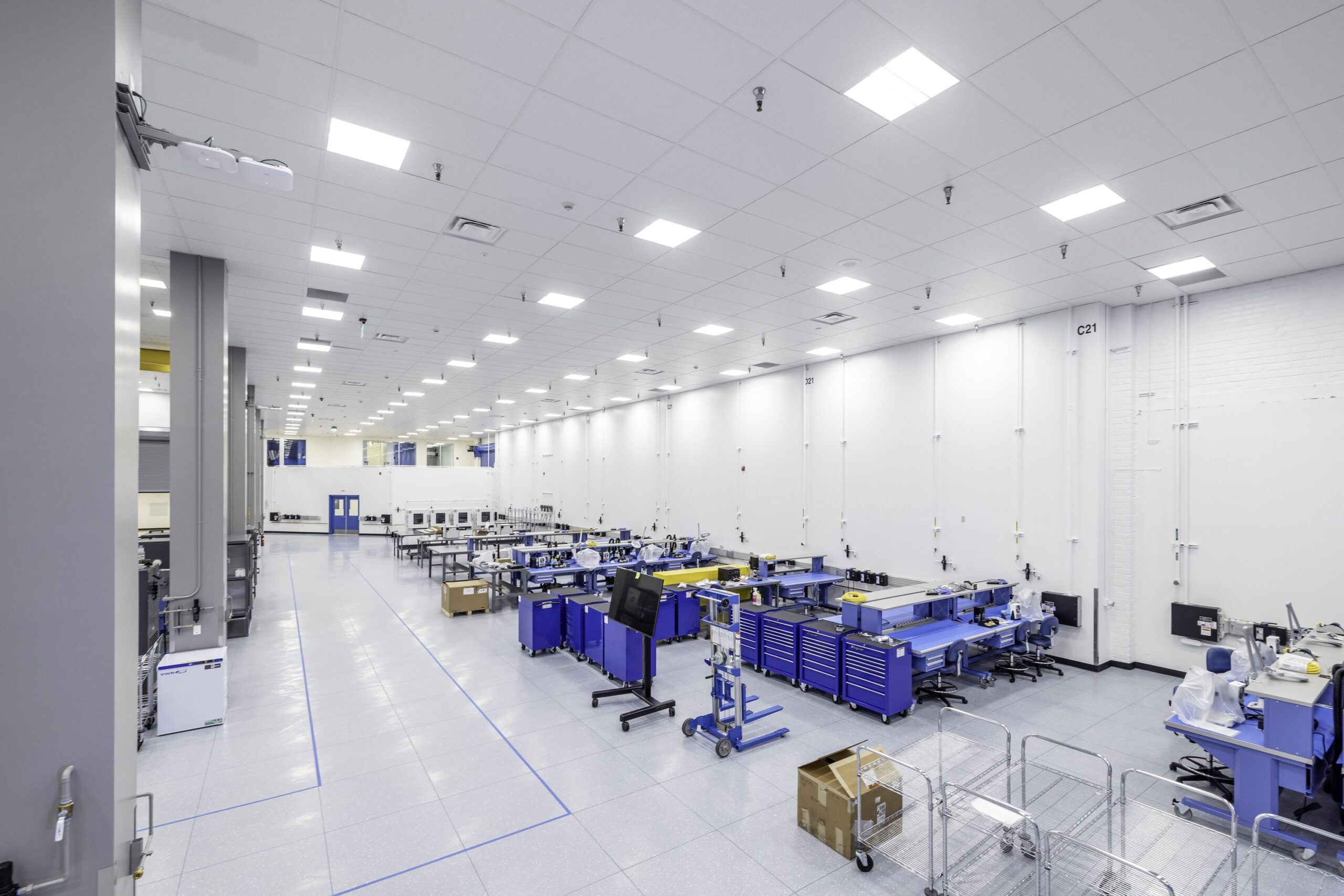Latest News

Boeing and Millennium Space Systems’ smallsat factory in El Segundo, California. Photo: Boeing
By the end of next year, Boeing‘s small satellite plant in El Segundo, California, may reach an annual production capacity of 60 satellites.
In 2018, Boeing bought Millennium Space Systems, which has grown from 200 employees to 1,000, including 800 at Boeing’s small satellite plant in El Segundo.
“Millennium has 100 percent success on its 15 missions,” Michelle Parker, vice president of Boeing Space Mission Systems, said during a March 20 interview. “They’re not just cranking microsats out. They are bringing real value in the missions they’re executing, and they’re doing that by defining a standard bus and standard building blocks. They are about 80 percent vertically integrated so they’re building their components in-house.”
“Our big, historic satellite factory is pretty well integrated as well,” she said. “But they are putting those building blocks together and setting up the production line so that we can produce, in the current footprint, about 60 satellites a year, and then we have plans, as they continue to grow, to replicate that until we get to 120 or 180 satellites a year within our factory footprint.”
Such a strategy may align well with what a National Reconnaissance Office (NRO) official said this week is a shift away from an agency focus on large satellites to smaller payloads and satellites as well. Millennium Space Systems has had work with the NRO dating back more than a decade, including building the agency’s Rapid Responsive spacecraft, which launched in 2011. Millennium has also been a major player in the U.S Space Force’s tactically responsive launch program as the builder of the VICTUS NOX Low-Earth Orbit (LEO) space domain awareness satellite, which launched last September.
The Space Development Agency (SDA) has helped alter the intelligence and defense industrial landscape, as SDA aims to field small, LEO satellites in two year “tranches.”
“SDA’s been really interesting in changing the thinking on that, and, if you know that you are gonna have an extended production line that’s gonna run for a while, there are decisions you make that allow you to drive your costs down because you’re not doing a one-off [satellite]” Parker said. “It’s efficiency of production–it’s designed for producibility. It’s automation — you invest in automation within your factory because you know you’re gonna be running a lot of things through it.”
Boeing’s small satellite factory in El Segundo delivered its first birds this year, and Parker said that Boeing’s small satellite backlog should keep the factory humming next year.
On a more traditional space program, Boeing said this month said that U.S. Space Force‘s Space Systems Command (SSC) had awarded the company a nearly $440 million contract to build the 12th Wideband Global Satcom (WGS) geosynchronous Equatorial orbit (GEO) communications satellite, which is to deter jamming through the Protected Tactical Waveform with antenna nulling in the Ka-band (Defense Daily, March 6). WGS-12 is to connect military forces through the Protected Tactical Enterprise Service ground system.
While SpaceX‘s Starlink LEO constellation has grabbed headlines for its command and control role in Ukraine’s defense, Russian hackers and jammers have at times disrupted the system, which SpaceX has been able to reboot through software fixes.
“One of the things that’s not always talked about in LEO — if you think about [a] GEO [satellite] covering a third of the Earth, in LEO, you don’t get that,” Parker said. “You need thousands of satellites to cover the Earth, which means, if you wanna go from the U.S. to Asia or somewhere else, you might have to hop, which adds to your latency. You might have to go up to a satellite and over and down, or up and down to the ground and back up and over.”
WGS-11 and 12 “are based on the integrated payload array [702x] technology that we have that is also on our commercial O3b that we build for SES,” she said. “That integrated payload array is fully software-defined, fully digital, meaning that it is completely selectable — 1,500 beams that can be positioned where you need them and when you need them, which is a lot different than your heritage, commercial communications satellites where the reflectors would be very defined for certain coverage areas.”
Both WGS-11 and 12 are to have nearly 100 times the number of beams as the most recent WGS, WGS-10, which has 18 beams — eight in the X-band and 10 in the Ka band.
The 1,500 beams “allow you to select the coverage areas on the Earth that you want, when you want–if you want South China Sea, U.S. coverage, European coverage; etc.” Parker said. “That’s one of the advantages of GEO. When you’re in that higher orbit, you can cover the entire globe with three satellites.”
Get the latest Via Satellite news!
Subscribe Now